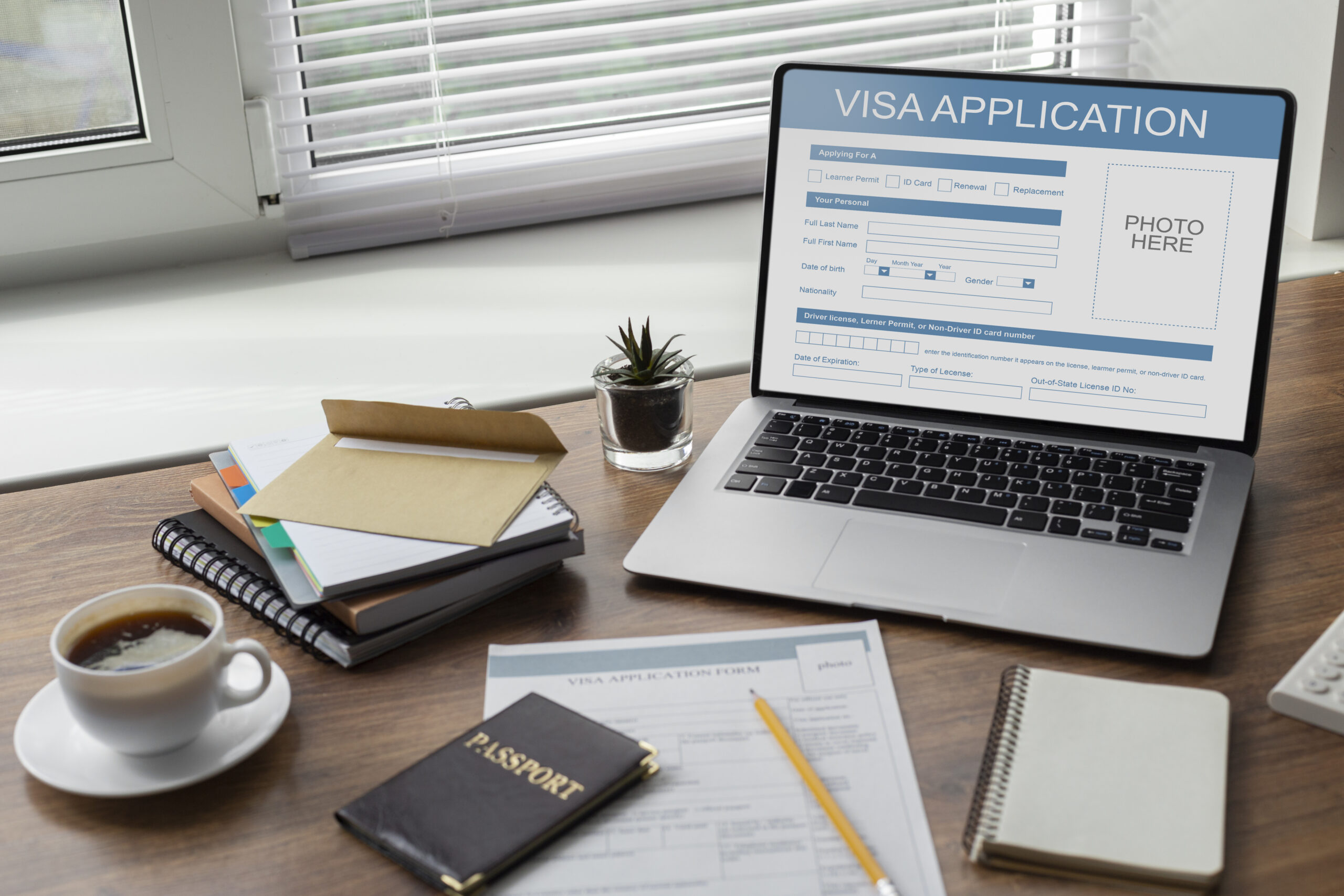Imagine standing at the gateway to Europe, a continent rich with history, diverse cultures, and breathtaking landscapes, from the romantic canals of Venice to the majestic Alps, from the sun-drenched beaches of Greece to the historic streets of Prague. For many, this dream of European exploration begins with a single document: the Schengen visa. If you’re an immigrant or traveler from a country that requires a visa to enter the Schengen Area, the application process might seem like navigating a labyrinth of paperwork and requirements. Perhaps you’ve heard conflicting advice from friends, found outdated information online, or simply feel overwhelmed by the prospect of dealing with foreign bureaucracy in a language you may not fully understand.
This blog aims to demystify the process, clearly breaking down each step and providing up-to-date, reliable information directly from official sources. Whether you’re planning a dream vacation, hoping to visit family, attending a business conference, or pursuing educational opportunities, understanding the Schengen visa application process is your first step toward making your European journey a reality.
What is the Schengen Area?
The Schengen Area is a zone of 29 European countries that have officially abolished passports and other border controls at their mutual borders. These countries function as a single jurisdiction for international travel purposes, with a common visa policy.
Current Schengen Member Countries
- Austria
- Belgium
- Bulgaria
- Croatia
- Czech Republic
- Denmark
- Estonia
- Finland
- France
- Germany
- Greece
- Hungary
- Iceland
- Italy
- Latvia
- Liechtenstein
- Lithuania
- Luxembourg
- Malta
- Netherlands
- Norway
- Poland
- Portugal
- Romania
- Slovakia
- Slovenia
- Spain
- Sweden
- Switzerland
For the most current information on Schengen Area membership, visit the official European Commission website.
Types of Schengen Visas
Before diving into the application process, it’s essential to understand which type of visa suits your travel needs:
- Short-Stay Visa (Type C)
This is the most common Schengen visa, allowing stays of up to 90 days within 180 days. It’s suitable for:
- Tourism
- Business trips
- Visiting family or friends
- Short-term study or training
- Medical treatment
- Cultural or sports events
- Official visits
- Airport Transit Visa (Type A)
This visa allows you to transit through the international transit areas of airports in Schengen countries without entering the Schengen Area.
- National Visa (Type D)
For stays longer than 90 days, you’ll need to apply for a national visa from the country you plan to reside in. This is outside the scope of this article, as each country has its own requirements for long-term stays.
Who needs a Schengen Visa?
Not everyone needs a visa to enter the Schengen Area. Citizens of certain countries can enter and stay for up to 90 days without applying for a visa.
To check if you need a visa, visit the official European Commission visa requirements tool.
Determining the Right Embassy or Consulate
One of the first steps in applying for a Schengen visa is determining where to submit your application:
- If you are visiting only one Schengen country: Apply at the embassy or consulate of that country.
- If visiting multiple Schengen countries: Apply at the embassy or consulate of your main destination (the country where you’ll spend the most time).
- If you plan to spend equal time in multiple countries: Apply at the embassy or consulate of the country you’ll enter first.
Essential Requirements for a Schengen Visa
1. Valid Passport
- Must be valid for at least three months beyond your planned departure date from the Schengen Area
- Issued within the last 10 years
- Contains at least two blank pages
2. Completed and Signed Application Form
Each country has its version of the Schengen visa application form, but they all request similar information. You can typically download the form from the embassy or consulate’s website.
3. Recent Passport-Size Photos
- 35mm x 40mm
- Taken within the last 3 months
- Plain light background
- Full face view
- Neutral expression with mouth closed
4. Travel Health Insurance
- Minimum coverage of €30,000
- Valid throughout the Schengen Area
- Covers medical emergencies, hospitalization, and repatriation
5. Proof of Accommodation
- Hotel reservations
- Rental agreement
- Letter of invitation from host (if staying with friends or family)
6. Proof of Financial Means
You must demonstrate that you have sufficient funds to support yourself during your stay. The specific amount varies by country but is around €100 per day.
Acceptable proof includes:
- Recent bank statements (usually for the last 3-6 months)
- Traveler’s checks
- Credit card statements with credit limit
- Sponsorship letter (if someone else is financing your trip)
7. Round-Trip Flight Reservation
You must provide proof of your intent to return to your home country, such as a flight reservation showing your entry and exit dates.
8. Proof of Employment Status
- For employed individuals: Employment contract, recent payslips, leave approval
- For self-employed individuals: Business registration, tax returns
- For students: Enrollment certificate, no-objection letter from the school/university
- For retirees: Pension statements
- For unemployed individuals: Proof of sufficient financial means, possibly a sponsor
9. Travel Itinerary
A detailed schedule of your planned activities, including:
- Dates and locations
- Transportation details between countries (if applicable)
- Planned activities or tours
10. Schengen Visa Fee
The standard adult fee is €90 and €45 for children aged 6-12. Note that this fee is subject to change.
Additional Documents Based on Travel Purpose
For Tourism
- Itinerary of planned activities
- Hotel reservations
- Tours or activity bookings (if applicable)
For Business Visits
- Invitation letter from the company in the Schengen Area
- Company cover letter from your employer
- Business activities schedule
- Trade fair entry tickets (if applicable)
For Visiting Family/Friends
- Invitation letter from your host
- Copy of host’s passport or residence permit
- Proof of relationship (if applicable)
- In some cases, a formal sponsorship form (“Proof of Sponsorship”)
For Medical Treatment
- Medical certificate from your doctor
- Confirmation from the receiving medical institution
- Proof of financial arrangements for treatment
- Proof of sufficient funds for accommodation and living expenses
For Cultural or Sports Events
- Invitation to the event
- Entry tickets
- Event program
- Participation confirmation letter
Step-by-Step Application Process
Step 1: Determine Your Visa Type and Where to Apply
Based on your travel purpose and itinerary, determine which type of visa you need and which embassy or consulate to apply to.
Step 2: Schedule an Appointment
Most embassies and consulates require you to schedule an appointment to submit your visa application. You can do this online through the embassy’s website.
Step 3: Gather Required Documents
Collect all necessary documents as outlined above. Create a checklist to ensure you don’t miss anything.
Step 4: Complete the Application Form
Fill out the application form completely and accurately. Any missing or incorrect information can lead to delays or rejection.
Step 5: Pay the Visa Fee
The fee payment process varies by embassy. Some require payment at application submission, while others may require payment in advance.
Step 6: Submit Your Application and Biometric Data
Attend your appointment to submit your application and provide biometric data (fingerprints and digital photograph). If you’ve provided biometrics for a Schengen visa within the last 59 months, you may not need to offer them again.
Step 7: Visa Interview
Be prepared to answer questions about your travel plans, financial situation, and ties to your home country. The interview assesses your intention to return home after your visit.
Step 8: Wait for Processing
Processing times vary by embassy and season, typically from a few days to two weeks. During peak travel seasons, processing may take longer.
Step 9: Collect Your Passport
Once a decision has been made, you’ll be notified to collect your passport. Some embassies offer courier services for an additional fee.
Common Reasons for Visa Rejection
Understanding common reasons for rejection can help you prepare a stronger application:
- Insufficient financial means: Inadequate proof that you can support yourself during your stay.
- Unclear travel purpose: Vague or inconsistent explanation of why you’re traveling.
- Weak ties to home country: Insufficient evidence that you’ll return to your home country.
- Incomplete or incorrect documentation: Missing documents or providing false information.
- Previous immigration violations: History of overstaying visas or illegal residency.
- Insufficient travel insurance: Coverage that doesn’t meet the minimum requirements.
- Questionable itinerary: Unrealistic or poorly planned travel schedule.
What to Do If Your Visa Is Rejected
If your application is rejected, you’ll receive a notification stating why. You have several options:
- Appeal the decision: You can file an appeal within the specified timeframe (usually 15-30 days).
- Address the issues and reapply: Fix the problems identified in the rejection notice and submit a new application.
- Seek legal assistance: Consult with an immigration lawyer specializing in Schengen visas.
Tips for a Successful Application
- Apply well in advance: Submit your application at least 15 days before your planned trip, but not more than 6 months in advance.
- Be honest and consistent: Ensure all information provided is truthful and consistent across all documents.
- Provide comprehensive documentation: Include all required documents and additional evidence that strengthens your case.
- Demonstrate strong ties to your home country: Show evidence of family, employment, property, or other commitments that prove your intention to return.
- Prepare for the interview: Be ready to explain your travel plans confidently and answer questions about your application.
- Follow the specific requirements: Each embassy may have slightly different requirements, so check their guidelines.
- Keep copies of everything: Make copies of all documents before submission for your records.
Conclusion
Navigating the Schengen visa application process may seem daunting initially, but with proper preparation and understanding of the requirements, you can increase your chances of success. Remember that each application is evaluated individually, and the key is to present a complete, honest, well-documented case that demonstrates your genuine travel intentions and ties to your home country.
By following the steps outlined in this blog and staying informed about the latest requirements through official sources, you’re on your way to turning your European travel dreams into reality. Whether you’re planning to sip espresso in an Italian piazza, marvel at architectural wonders in Barcelona, or explore the historic streets of Vienna, the journey begins with a successful visa application.


